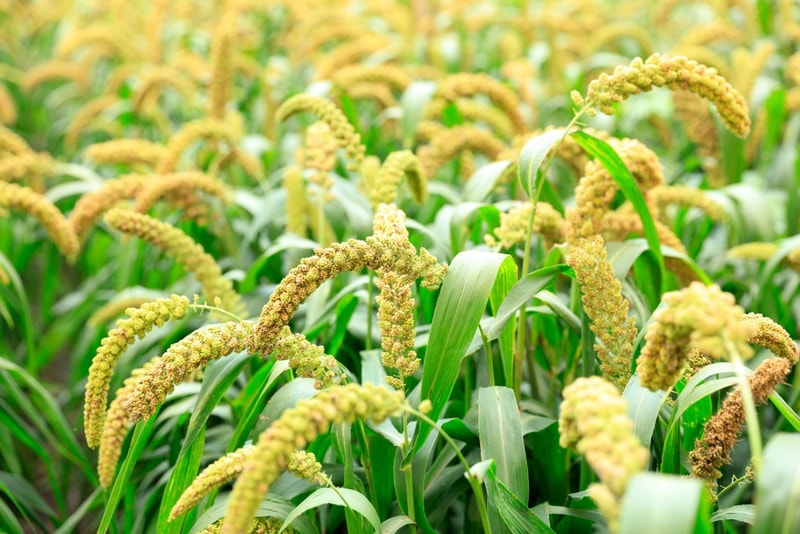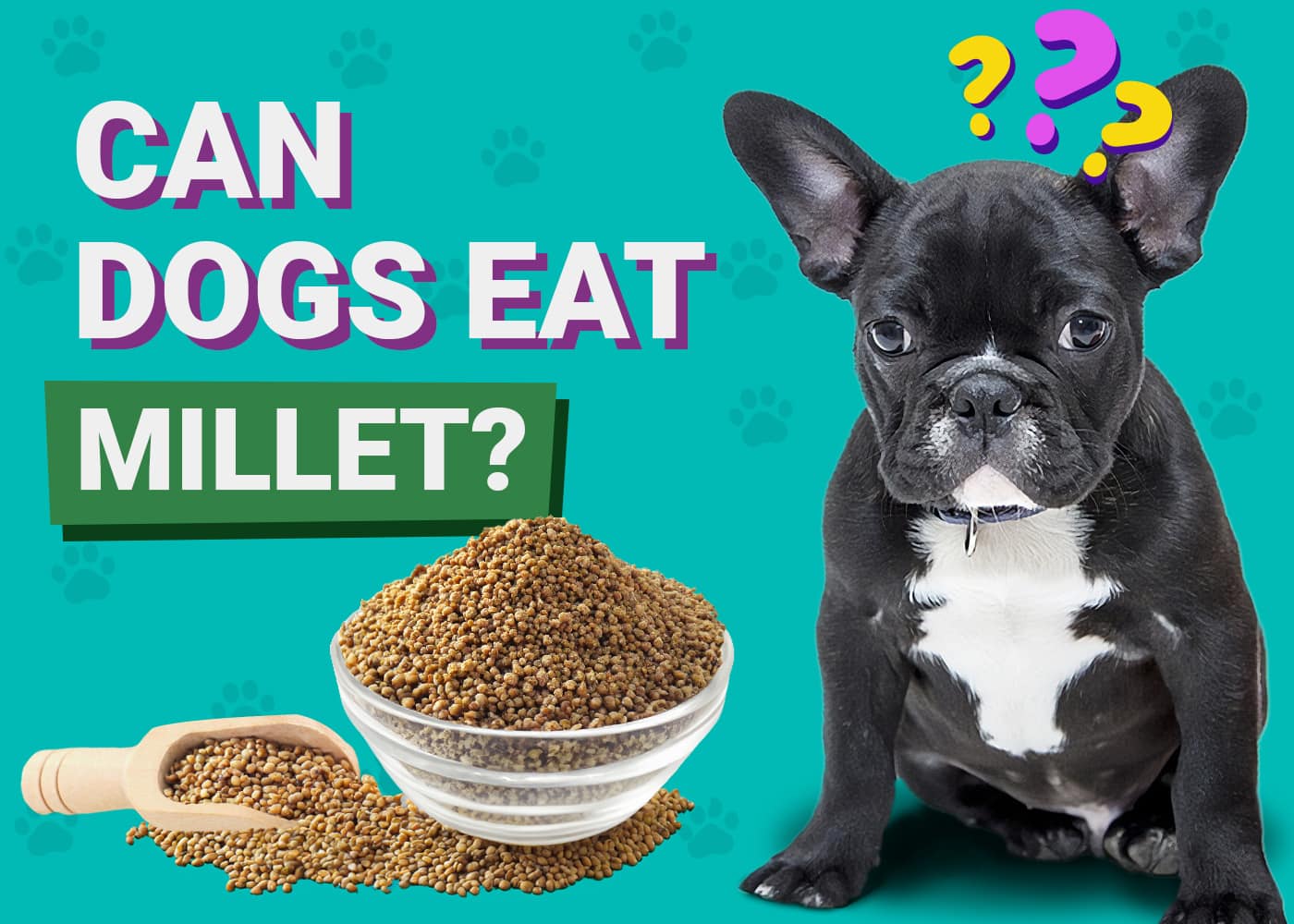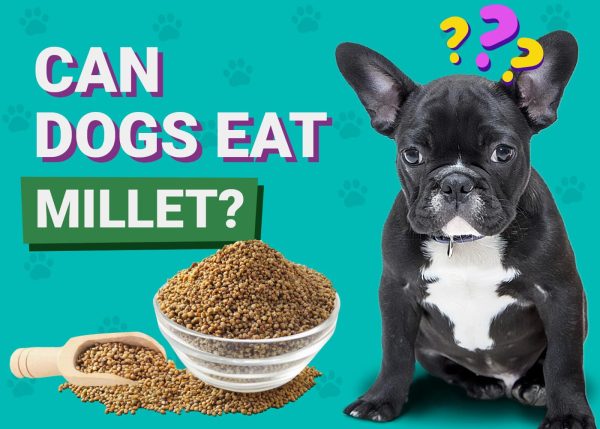As a dog owner, it’s important to know what foods are safe for your dog to eat. This is especially true if your pooch is one of those that enjoys begging or sharing what you’re eating. When you’re eating healthy or trying to avoid certain things like gluten, it’s difficult to know whether your dog can share in the same things you eat. One of these things may be millet. Yes, millet is a grain that is gluten-free and a great source of vitamin B, iron, phosphorus, and other essential minerals. Luckily, this grain and the good things it offers are also safe for your dog to eat. Let’s learn a bit more about millet, what it offers your pooch, and how often you should allow your dog to enjoy this grain.
A Bit About Millet
Millet is a whole grain that is grown mostly in Asian and African countries. This grain is small and round. Most commonly, millet is used for human consumption and to make feed for birds and livestock. The popularity of this grain is thanks to its hardiness. This crop can stand up to harsh environmental issues and is resistant to drought and pests.
Millet is a part of the Poaceae family of grasses. Like many other grains, there are several varieties of millet. These varieties are classified depending on their color, appearance, and species. Most millet varieties are separated into large and small varieties. Let’s take a look at those two different types and what falls into those categories below.

Small Millet Varieties:
- Adlay
- Barnyard
- Browntop
- Fonio
- Guinea
- Kodo
- Little
Large Millet Varieties:
- Finger or ragi
- Foxtail
- Pearl
- Proso

The Nutritional Profile of Millet
We’ve already mentioned a few of the amazing benefits millet offers not only to you but also to your dog. It contains iron, phosphorus, vitamin B, protein, magnesium, and folate. Of all the millet types, finger millet has the most calcium of all other types including other cereal grains.
Let’s take a look at the nutritional profile of one cup of cooked millet.1
| Calories | 207 |
| Fiber | 2.2 grams |
| Carbohydrates | 41 grams |
| Fat | 1.7 grams |
| Protein | 6 grams |
More Benefits of Millet for Your Dog
Now that you’ve seen the nutritional profile of millet, let’s take a look at a few more of the benefits that are very beneficial to your pooch.
Cell Repair
Millet is high in phosphorus which is great for your dog. Phosphorus helps promote tissue and bone regeneration in dogs. It also aids in cell repair. All of these benefits of phosphorus are ideal for your dog’s health and can help them live a long life.

Gluten-Free and Easily Digested
Gluten isn’t bad for dogs to consume but for some, it can be difficult to digest. Millet is free of gluten making it easier to digest for your pet. This removes many of the concerns over gastrointestinal distress which is great for dogs and owners.
Antioxidants
Most of us are aware of the benefits of antioxidants when it comes to neutralizing free radicals in the body. But what are free radicals? They are unstable molecules that can increase inflammation and cell damage. In millet, you’ll find high amounts of ferulic acid and catechins. Both of these can help protect your dog against the chance of oxidative stress and help with wound healing.
Certain millet varieties have more antioxidants than others. If you’re wanting your dog to have the most antioxidants possible consider using darker millet varieties such as finger, proso, and foxtail. You’ll find that these have more beneficial antioxidants than the yellow and white millet varieties.

The Risks of Millet for Dogs
Overall, millet isn’t dangerous for dogs. However, every dog is different and could have issues that aren’t expected. Dogs who suffer from stomach issues or sensitivities may suffer from digestive issues when eating millet. You’ll also want to ensure that your dog isn’t eating millet as the main source of nutrition. While it is a great occasional addition to your dog’s diet, it doesn’t offer all the nutrients your dog needs to stay healthy. Make sure your dog still eats a well-balanced diet. This can include high-quality, high-protein dog food that has millet as an ingredient.
Millet can also be dangerous if it isn’t stored properly. Millet must be stored in an air-tight container to avoid molding. Keep the container away from heat and light. You’ll also want to check for any discoloration or signs of mold before using. Mold growing on millet produces aflatoxins which can be dangerous for humans and dogs.

Conclusion
As you can see, millet is safe for dogs to consume as long as they aren’t suffering from stomach sensitivities. You can buy dog food that features millet or even make healthy treats at home for your pooch to enjoy. Either way, if you decide to share this healthy grain with your dog, it should be completely safe and beneficial for them to enjoy.
Featured Image Credit: kostrez, Shutterstock










